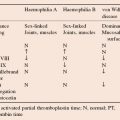Myelodysplasia (MDS) is a clonal haemopoietic stem cell disorder characterized by peripheral blood cytopenias most frequently affecting more than one lineage usually in association with a hypercellular marrow indicating ineffective haemopoiesis.
Aetiology and pathogenesis
MDS may be primary (de novo) or a consequence of previous chemotherapy/radiotherapy (secondary). Various chromosome abnormalities occur, e.g. complete or partial deletions of chromosomes 5 or 7. Point mutations detected by molecular techniques are frequent, e.g. in RAS or other oncogenes. Mutation of genes involved in RNA splicing occur in 45–85% of cases of MDS. The disease is divided into six subgroups or myelodysplastic syndromes largely depending on how many bone marrow lineages are involved, whether or not ‘ring sideroblasts’ are present in the bone marrow and the proportion of myeloblasts in the marrow (Figure 25.1d; Box 25.1). It may transform to acute myeloid leukaemia (AML) (>20% blasts in the marrow).
Refractory cytopenias with unilineage dysplasia
Refractory anaemia with ring sideroblasts
Refractory cytopenia with multilineage dysplasia
Refractory anaemia with excess marrow blasts: type I (5–9%), type II (10–19%)
Myelodysplastic syndromes associated with isolated del (5q)
Chronic myelomonocytic leukaemia
Stay updated, free articles. Join our Telegram channel

Full access? Get Clinical Tree




